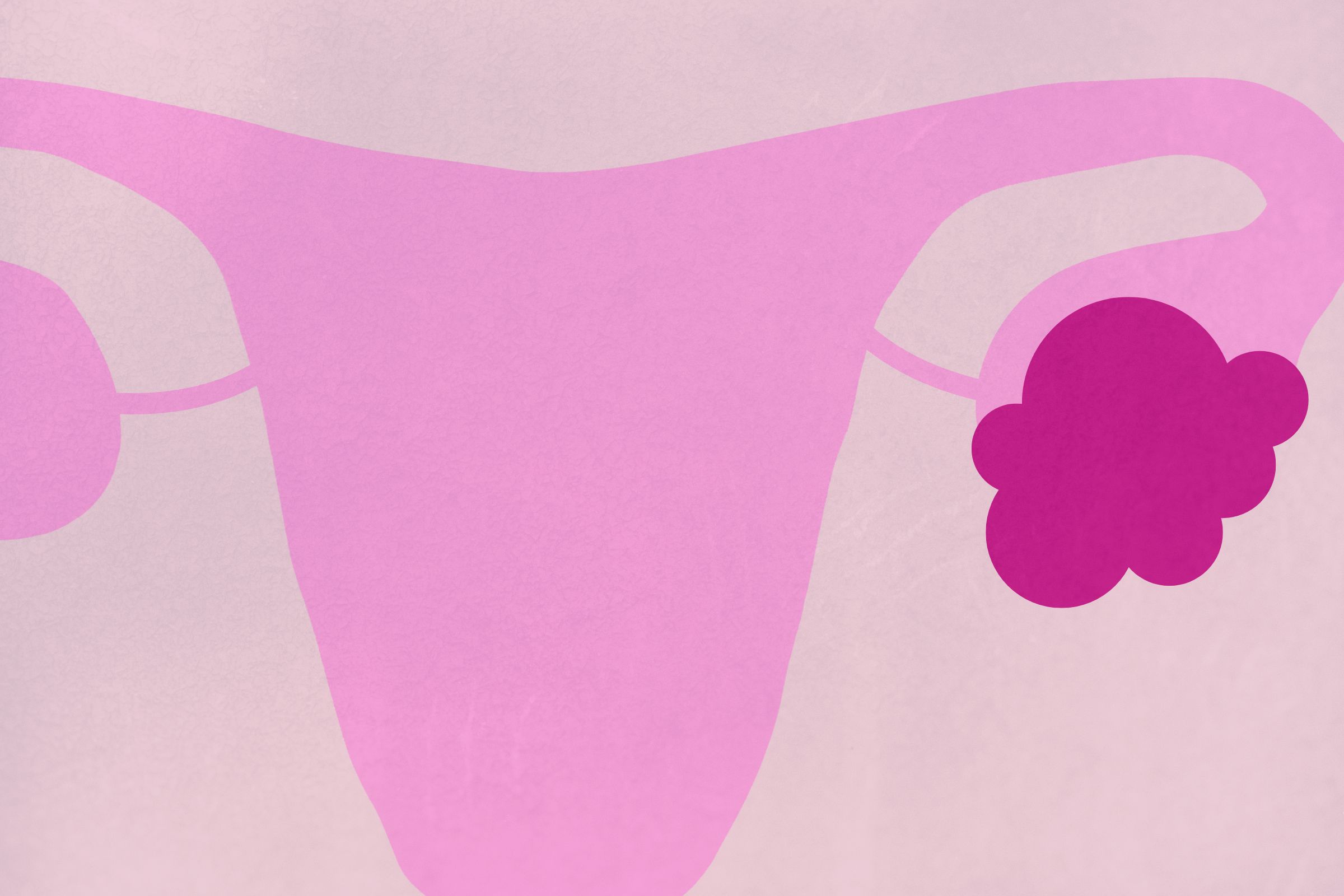Ovarian cysts, which are small fluid-filled sacs that develop in or on the ovaries, are very common and are usually harmless.
In fact, “the process of ovulation—maturing an egg and releasing it—basically makes at least a little cyst, which pops when the egg is released, and then these cysts resolve,” explains Dr. Mary Jane Minkin, an ob-gyn at Yale Medicine. These are often called “functional cysts,” and they usually go away on their own.
[time-brightcove not-tgx=”true”]
Other types of ovarian cysts include hemorrhagic cysts (which bleed and cause pain), dermoid cysts (which may contain skin cells and sebaceous glands), and endometriomas (which are filled with dark, thick blood and develop as a result of endometriosis). Ovarian cysts also can occur with polycystic ovary syndrome (PCOS), but they don’t always.
Here’s what to know about ovarian cysts.
How ovarian cysts affect women
Most ovarian cysts are the size of a grape or cherry and don’t cause symptoms. But cysts that grow quickly can cause pain in the pelvis near the hipbone and a feeling of persistent pressure. “This discomfort can be intermittent or constant and may feel sharp or dull,” says Dr. Kelli V. Burroughs, an ob-gyn at UT Health—University of Texas Medical School at Houston.
By contrast, cysts that rupture or burst can cause intense pelvic pain and sometimes slight bleeding, says Minkin. “The pain will get better as the fluid gets absorbed by the lining of the abdominal cavity.”
Read More: Can You Actually Delay Menopause?
Also, with a complication called ovarian torsion, the ovary can become twisted around the supporting tissue if a cyst gets large, says Dr. Michael B. Baldonieri, an ob-gyn at the Case Western University School of Medicine. “This can cause unrelenting, severe lower pelvic pain, along with nausea and vomiting.” This is considered a medical emergency because a torsion can cut off the blood supply to the ovary, causing the ovary to die if it’s not surgically untwisted.
How most ovarian cysts are treated
What an ovarian cyst looks like on a transvaginal ultrasound and how it’s affecting a woman helps determine how it’s treated, says Dr. Daniel Ginn, an assistant clinical professor of obstetrics and gynecology at UCLA. If it looks like a collection of fluid in a small pouch or balloon and if the woman has minimal or no symptoms, a doctor may recommend “watchful waiting”—monitoring symptoms and repeating a pelvic ultrasound every six to eight weeks to see if the cyst has changed in size.
During an ultrasound, a clinician will assess the size and structure of the mass, where it’s located, and any other notable features, “all of which can help differentiate benign from potentially malignant growths,” Burroughs says.
Women with ovarian cysts often worry that they could be a sign of ovarian cancer. While that’s possible, it’s not common. If a mass on the ovary has solid components as well as fluid, it could be a sign of ovarian cancer. “An ultrasound usually gives us a good idea if the cyst has some solid components,” says Minkin.
Read More: Is Seltzer Water Good or Bad for You?
But if the cyst is clearly fluid-filled and hasn’t changed over time, the risk of cancer is low, even among older women. A study in a 2024 issue of the American Journal of Obstetrics & Gynecology found that among women ages 50 and older who had stable ovarian cysts detected on ultrasound, the risk of ovarian cancer was 0.27% over a follow-up period of 3.5 years.
On the other hand, “cysts that get bigger are concerning,” says Ginn. And “if there’s abnormal blood flow through a cyst or fingerlike projections at the periphery of a cyst, that’s more concerning.” In these instances, a doctor may order blood tests to measure cancer antigen 125 (CA 125, for short), a protein that’s often elevated when someone has ovarian cancer, and other tumor markers.
If a cyst’s appearance raises concerns—especially if the woman has elevated CA 125 levels—she will likely be referred to a gynecologic oncologist for specialized evaluation and treatment.
If an ovarian cyst isn’t causing symptoms or only mild ones, it may not need to be treated and can simply be monitored over time. “Two-thirds of ovarian cysts are going to resolve on their own,” Ginn says.
How to feel better
For ovarian cysts that cause pain, medications such as acetaminophen, ibuprofen, or another non-steroidal anti-inflammatory (NSAID) drug can help, Baldonieri says. So can applying a heat or ice pack—whichever feels better to you—to the painful area.
If a cyst is large enough or causing serious discomfort, it can be removed through laparoscopic surgery, which is performed with small incisions through the abdomen, Ginn says. “Ovarian preservation is always a priority so you can keep your hormones, which are important for heart health, bone health, and cognition.”
For women who frequently get large or painful cysts, “we try to suppress ovulation, which is why ovarian cysts emerge in the first place,” says Ginn. This is usually done with oral contraceptives (or their hormonal equivalent), which can help prevent new cysts from forming.

